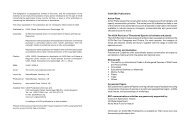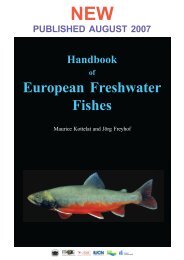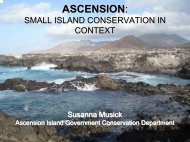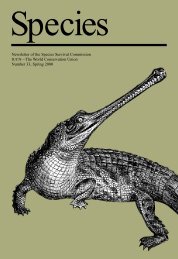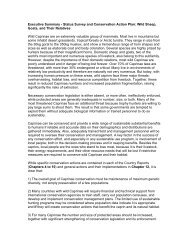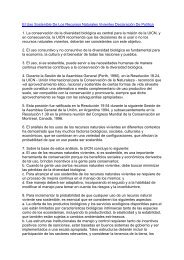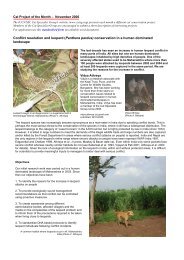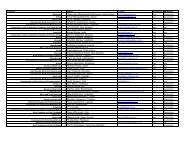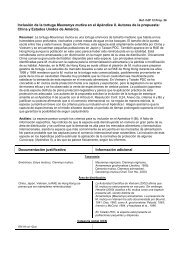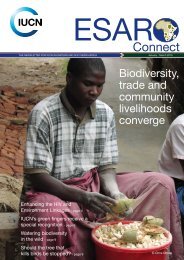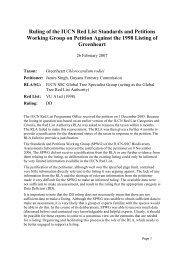Planning education to care for the earth - IUCN Knowledge Network
Planning education to care for the earth - IUCN Knowledge Network
Planning education to care for the earth - IUCN Knowledge Network
You also want an ePaper? Increase the reach of your titles
YUMPU automatically turns print PDFs into web optimized ePapers that Google loves.
Effects of <strong>education</strong> on seabird conservationemploying and training residents as migra<strong>to</strong>ry bird officers. Applicantsusually had a his<strong>to</strong>ry of poaching, but <strong>the</strong>ir experience combined withtraining made <strong>the</strong>m very effective wardens. Since 1986, wardens have beenat work each year during <strong>the</strong> nesting season.Local organizations have been better equipped <strong>to</strong> support conservationprogrammes through technical assistance and study <strong>to</strong>urs as well as seed grantsin wildlife management, <strong>to</strong>urism development and <strong>the</strong> preservation of his<strong>to</strong>ricbuildings. In <strong>the</strong> 1990s highest priority in <strong>the</strong> programme has been given <strong>to</strong>technical training, leadership development and organization-building capacities.There is an urgent need <strong>for</strong> training in new skills and <strong>for</strong> <strong>the</strong> diversification of<strong>the</strong> local economy in eastern Canada, where <strong>the</strong> decline of cod fishing in <strong>the</strong>north-west Atlantic has put thousands of fishermen out of work.In<strong>for</strong>mation disseminationThe style of in<strong>for</strong>mation and <strong>education</strong> materials was locally relevant andpractical. These materials were introduced by person-<strong>to</strong>-person contactra<strong>the</strong>r than through mass mailings. They included a seabird identificationposter, a citizens’ guide <strong>to</strong> regulations concerning seabirds, a newsletter <strong>for</strong>primary schools, and <strong>the</strong> calendar from <strong>the</strong> children’s poster contest.Community radio stations were used extensively. Residents spoke about<strong>the</strong>ir relationship <strong>to</strong> <strong>the</strong> wildlife of <strong>the</strong> coast in a radio co-production with <strong>the</strong>Canadian Broadcasting Corporation. School lessons, radio programmes andspecial events were designed <strong>to</strong> improve local knowledge and encouragepositive attitudes.Although in<strong>for</strong>mation materials were well received, <strong>the</strong>y were consideredless important in changing public attitudes than person-<strong>to</strong>-person and groupactivities, particularly those involving hands-on experiences.Support buildingAmong <strong>the</strong> most popular activities in building support <strong>for</strong> conservationwere study <strong>to</strong>urs <strong>for</strong> conservation leaders from across Canada in 1983,1984, 1987 and 1992. The <strong>to</strong>urs included homestays in a remote village,visits <strong>to</strong> <strong>the</strong> sanctuaries, and participation in community <strong>for</strong>ums onconservation. Study <strong>to</strong>urs fostered pride, heightened local perception of <strong>the</strong>value of seabirds, and inspired local action <strong>to</strong> improve sanctuaries. Theyhelped <strong>to</strong> create alliances between local and regional conservation groupsand promoted <strong>to</strong>urism.The <strong>education</strong> programme owed its success <strong>to</strong> many fac<strong>to</strong>rs. One was <strong>the</strong>longstanding reputation of QLF as a provider of social services on <strong>the</strong> coast.The small size of <strong>the</strong> population meant that new ideas could be quicklydisseminated through well-established channels of communication. Theinfluence of group leaders who endorsed <strong>the</strong> project was critical.Programmes were introduced by QLF staff - university students from Canadaand <strong>the</strong> United States - who had no government affiliation and often lived43



